Japan has more Michelin-starred restaurants than almost any other country, and there’s a reason for it. From Tokyo’s bustling streets to Kyoto’s quiet lanes, the focus on precision, freshness, and tradition is unmatched. Japanese chefs treat food preparation as an art, valuing seasonal ingredients, presentation, and balance. Add in a culture obsessed with quality and a dining public willing to invest in excellent meals, and the results are clear. This blend of tradition, innovation, and dedication has put Japan at the top of the culinary world.
A Legacy of Culinary Excellence
Japan has earned a reputation as the culinary capital of the world, and this didn’t happen overnight. Its dedication to culinary precision, tradition, and innovation creates the perfect recipe for culinary greatness. Below, we explore the key cultural and technical aspects that contribute to Japan’s unmatched Michelin-starred restaurant scene.
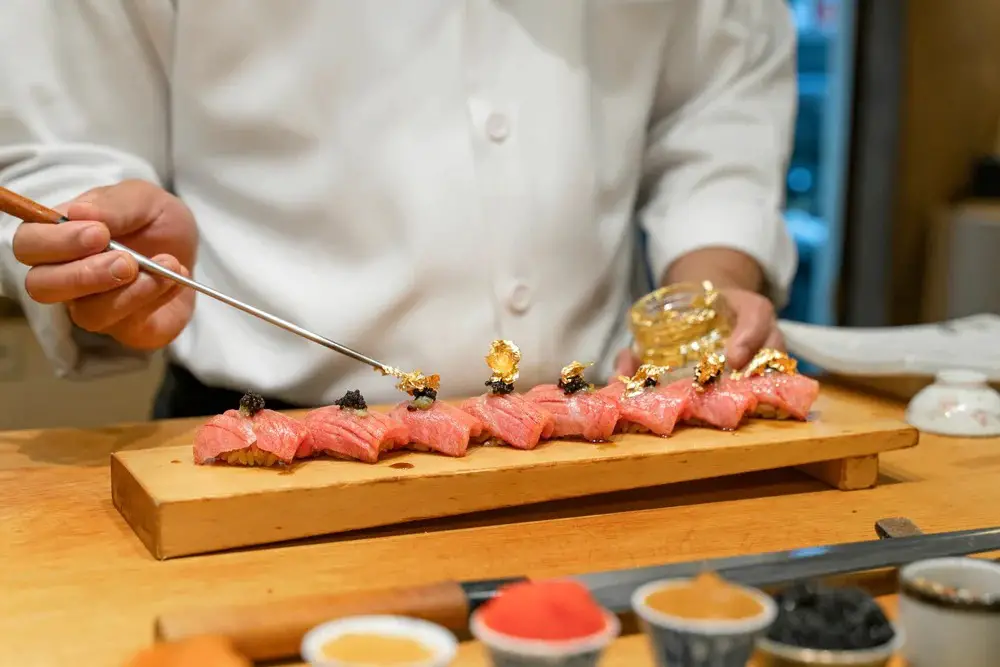
The Role of Traditional Cuisine
Traditional Japanese dishes like sushi, kaiseki, and ramen form the soul of its food culture. These dishes are deeply rooted in craftsmanship, balancing taste, texture, and visual beauty. Each represents simplicity and sophistication. For example, sushi showcases the ability to turn seafood and rice into edible art, while kaiseki—Japan’s multi-course haute cuisine—reflects the seasons and incorporates fresh, local ingredients. Even ramen, often viewed as comfort food, adheres to meticulous preparation to achieve its full flavor spectrum.
In Japan, tradition isn’t just respected; it’s celebrated. Chefs take centuries-old techniques and elevate them to unprecedented levels of refinement. These dishes are more than meals—they are cultural expressions, passed down and perfected over generations. This connection to the past contributes significantly to Japan’s abundance of Michelin-starred institutions.
Read more about the art behind traditional Japanese dishes in this article on kaiseki cuisine.
Focus on Mastery and Perfection
Japanese chefs are known for their tireless dedication to their craft. Many spend decades not only learning but mastering a single aspect of cooking. For instance, an aspiring sushi chef may train for years just to perfect rice preparation before even touching fish. This commitment stems from the traditional philosophy of “kaizen,” or continuous improvement, which permeates Japanese culture.
This focus on mastery transforms Japanese restaurants into places of worship for food lovers. Every slice of sashimi, every bowl of soup, bears the mark of years of training. Perfection isn’t a goal—it’s the journey itself. Culinary masters like Jiro Ono, whose sushi is world-renowned, exemplify this unrelenting pursuit of excellence.
Learn more about how chefs strive for mastery in Japan.
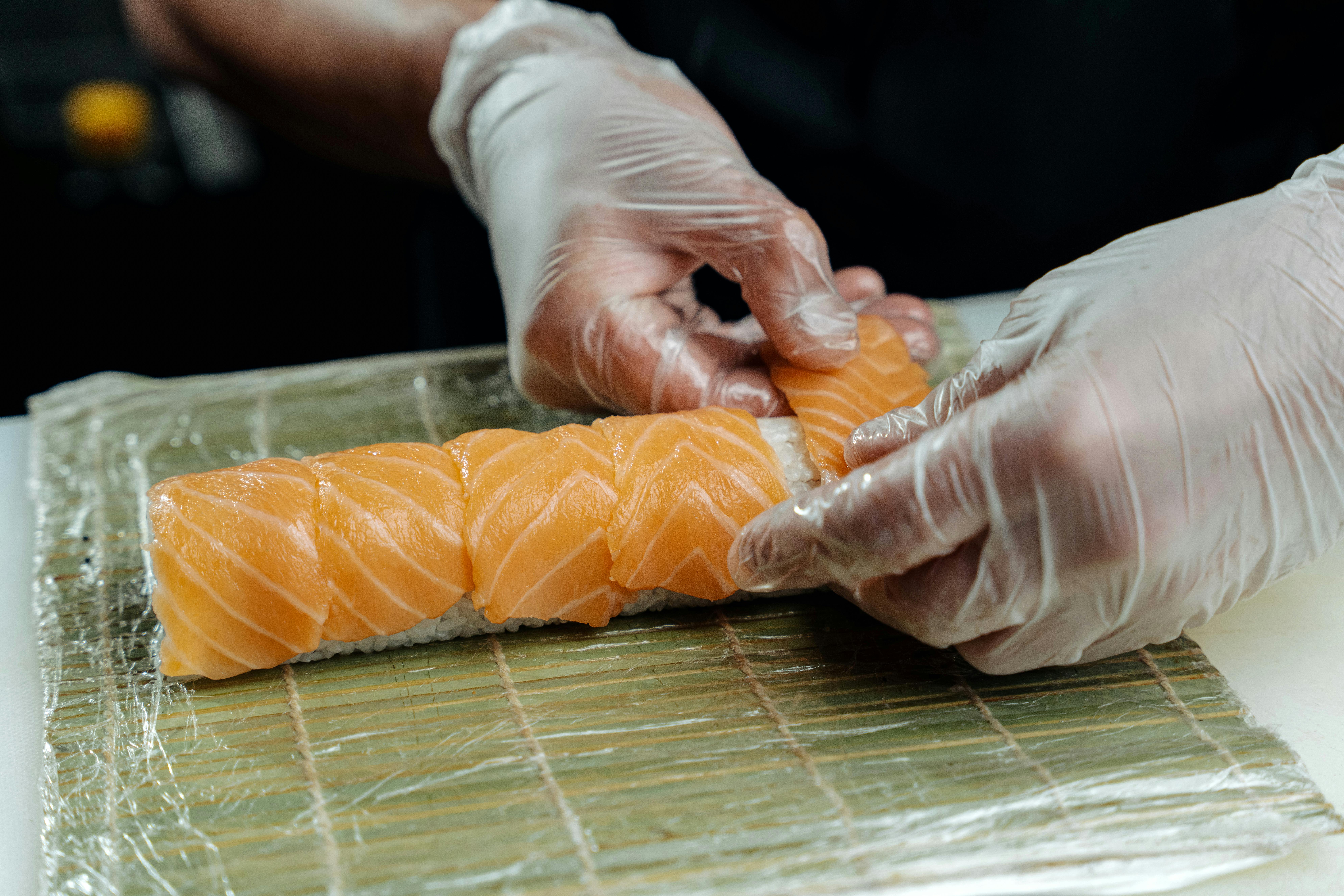
Photo by Ivan Samkov
Cultural Importance of Food
Food in Japan is an art form and a medium of communication. It’s deeply interwoven into every aspect of life—from festivals and ceremonies to daily meals. Each dish tells a story, representing gratitude toward nature, respect for the seasons, and an appreciation of balance.
For example, offering the first rice harvest to gods shows the level of respect tied to food in Japan. Meals are presented with care, even in casual settings, because presentation and taste harmonize to honor the eater and the ingredients. In this way, food transcends consumption—it becomes a shared experience of joy and gratitude.
This cultural reverence translates directly to the culinary world, where chefs carry the responsibility of reflecting these values through their work. Michelin-starred restaurants in Japan are as much about the emotional and sensory experience as the culinary one.
Discover more about Japan’s rich food culture and its connection to tradition.
Access to World-Class Ingredients
The foundation of any exceptional cuisine is the quality of its ingredients, and Japan takes this to the next level. From coastal waters brimming with seafood to a reverence for seasonal produce, the country’s Michelin-star success is deeply tied to its unparalleled access to top-quality ingredients.
The Sea’s Bounty
Japan, an island nation surrounded by oceans, has an intimate connection with the sea. Its unique geography provides chefs with daily access to some of the freshest fish and seafood on the planet. Fish markets like Tokyo’s Toyosu Market buzz with activity, showcasing everything from succulent bluefin tuna to delicate scallops, all caught within hours.
Here, freshness isn’t just a preference—it’s a cultural expectation. The Japanese palate prizes the subtle flavors of raw and lightly cooked seafood, making freshness non-negotiable. This expectation has led to rigorous standards in fishing and distribution. By the time a piece of sashimi arrives on a plate at a Michelin-starred restaurant, it’s nothing short of perfection.
Additionally, Japan’s geography offers diverse oceanic conditions, supporting a wide range of marine life. From the umami-packed flavors of kombu (kelp) harvested in Hokkaido to the prized uni (sea urchin) of northern Japan, the variety of ingredients available to Japanese chefs is unmatched. This vast selection allows chefs to innovate while staying rooted in tradition.
Learn more about Japan’s fresh seafood culture.

Photo by Kampus Production
Seasonality and Freshness
In Japan, food is more than sustenance; it’s a celebration of nature. Seasonal eating—or shun—is a guiding principle in Japanese cuisine. Shun emphasizes using ingredients at their peak flavor, ensuring maximum taste, texture, and nutritional value.
Each season brings a bounty of distinctive ingredients. Spring might showcase tender bamboo shoots, while summer menus highlight fresh eel. Fall introduces earthy matsutake mushrooms, and winter brings creamy crab and sweet persimmons. This seasonal cycle ensures constant innovation in kitchens, pushing chefs to create dishes that resonate with the time of year.
This commitment to seasonality extends to Michelin-starred menus. Chefs take pride in honoring ingredients by preparing them simply, preserving their essence. Diners might be served a single cherry blossom leaf in spring or ice-cold somen noodles in the heat of summer to reflect the season and connect them to the natural world.
Discover the philosophy behind Japan’s seasonal ingredients.
These culinary practices are more than traditions; they are integral to why there are so many Michelin-starred restaurants in Japan. By having access to the finest, freshest ingredients and an ingrained respect for seasonality, Japanese chefs transform the simplest items into masterpieces that leave diners in awe.
The Influence of Michelin Inspectors
Michelin inspectors are renowned for setting the global standard for fine dining, and their presence in Japan has had a profound impact on shaping the country’s restaurant scene. Japan’s culinary focus on precision, artistry, and an immersive dining experience aligns seamlessly with the values Michelin inspectors hold dear. This synergy has naturally contributed to the proliferation of Michelin-starred restaurants across Japan.
Presentation and Detail: The Artistry of Japanese Dining
In Japan, food presentation is paramount. Chefs don’t just cook; they create edible masterpieces. Plates are meticulously crafted, often resembling art exhibitions more than meals. It’s not uncommon for dishes to mirror seasonal landscapes—think leaves in autumnal tones or dishes styled to resemble cherry blossoms in spring.
This obsession with detail resonates perfectly with Michelin’s inspection criteria. Inspectors evaluate not just taste, but the entire sensory experience. From the alignment of sashimi slices to the symmetry of a kaiseki course, precision matters. Japanese chefs embrace “kodawari,” meaning uncompromising attention to detail. This philosophy ensures every dish that leaves the kitchen is flawless.
Additionally, minimalism plays a significant role. Japanese cuisine rarely overwhelms with quantity or clutter. Instead, it emphasizes balance and a perfect interplay of flavors. This approach aligns with the refined elegance Michelin looks for, giving Japan’s top-tier restaurants a head start when evaluated by inspectors.
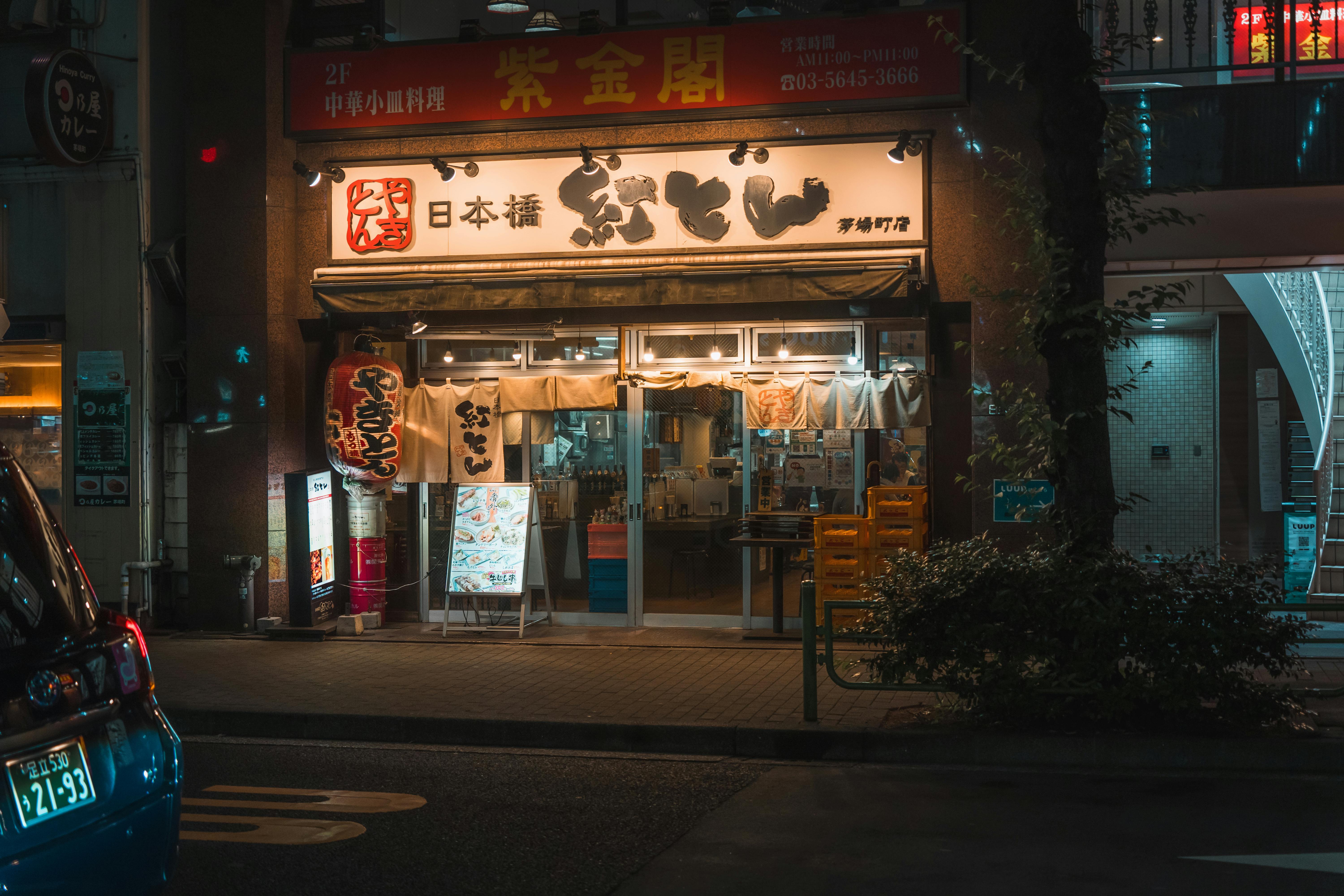
Photo by Michael Pointner
Hospitality and Ambience: The Heart of Omotenashi
Japanese hospitality, or omotenashi, is more than customer service—it’s a philosophy. The idea is to offer wholehearted, selfless service where every detail is planned to enhance the guest’s experience. From greeting diners at the door to anticipating their needs without being intrusive, omotenashi creates a seamless dining atmosphere.
This cultural emphasis elevates Japan’s restaurant scene beyond just food. Ambience is crafted thoughtfully—whether it’s arranging seating for optimal comfort or maintaining a hushed zen-like calm in the dining room. Guests feel welcomed, appreciated, and cared for, which leaves a lasting impression.
Michelin inspectors notice these nuances. Beyond flavors, they evaluate the complete experience, which includes staff attentiveness, surroundings, and mood. The almost spiritual dedication to creating the “perfect moment” sets Japanese restaurants apart globally.
For instance, at Michelin-starred sushi bars, chefs often establish personal connections with diners, explaining the origins of ingredients and the inspiration behind each dish. This elevates the meal to a shared journey. The result? An unparalleled dining experience where customers and inspectors alike feel truly valued.
Discover more about the concept of omotenashi and its role in Japanese fine dining.
Tokyo: The Global Star Capital
Tokyo stands tall as the culinary crown jewel of Japan, amassing the highest number of Michelin stars in the world. The city isn’t just a hub for fine dining; it’s a celebration of diversity, uniqueness, and artistry in food. From intimate alleyway noodle bars to prestigious luxury dining spots, Tokyo offers a spectrum of flavors and experiences that cater to every food lover. Here’s how Tokyo’s culinary brilliance unfolds.
Diverse Culinary Offerings: High-End and Traditional Dining Unite
Tokyo thrives on diversity, especially when it comes to food. It’s a city where tradition meets variety, and quality remains non-negotiable. Whether you’re in search of refined French-Japanese fusion at a Michelin-starred haven or the umami-packed simplicity of a ramen shop, your taste buds are in for a treat.
- High-end dining: Tokyo is home to fine-dining establishments that redefine luxury. Restaurants like est showcase haute cuisine with contemporary twists, serving dishes that exemplify delicate artistry and deep respect for ingredients.
- Authentic traditions: On the other hand, Tokyo’s smaller hidden gems, such as soba and yakitori specialists, demonstrate the city’s love for traditional cooking methods, passed down carefully from generation to generation. These modest spots often make it onto the Michelin Guide, proving that excellence doesn’t always require opulence.
- Global influence: While firmly rooted in Japanese heritage, Tokyo’s food scene embraces influences from all over the globe. From buttery French pastries to bold Korean BBQ, international cuisines highlight the city’s openness and adaptability.
In Tokyo, variety means you’ll never have to choose between tradition and innovation. The unchanging focus on precision and hospitality ensures every meal feels thoughtfully crafted, whether you’re eating a Michelin-starred Kaiseki dinner or a bowl of midnight ramen.
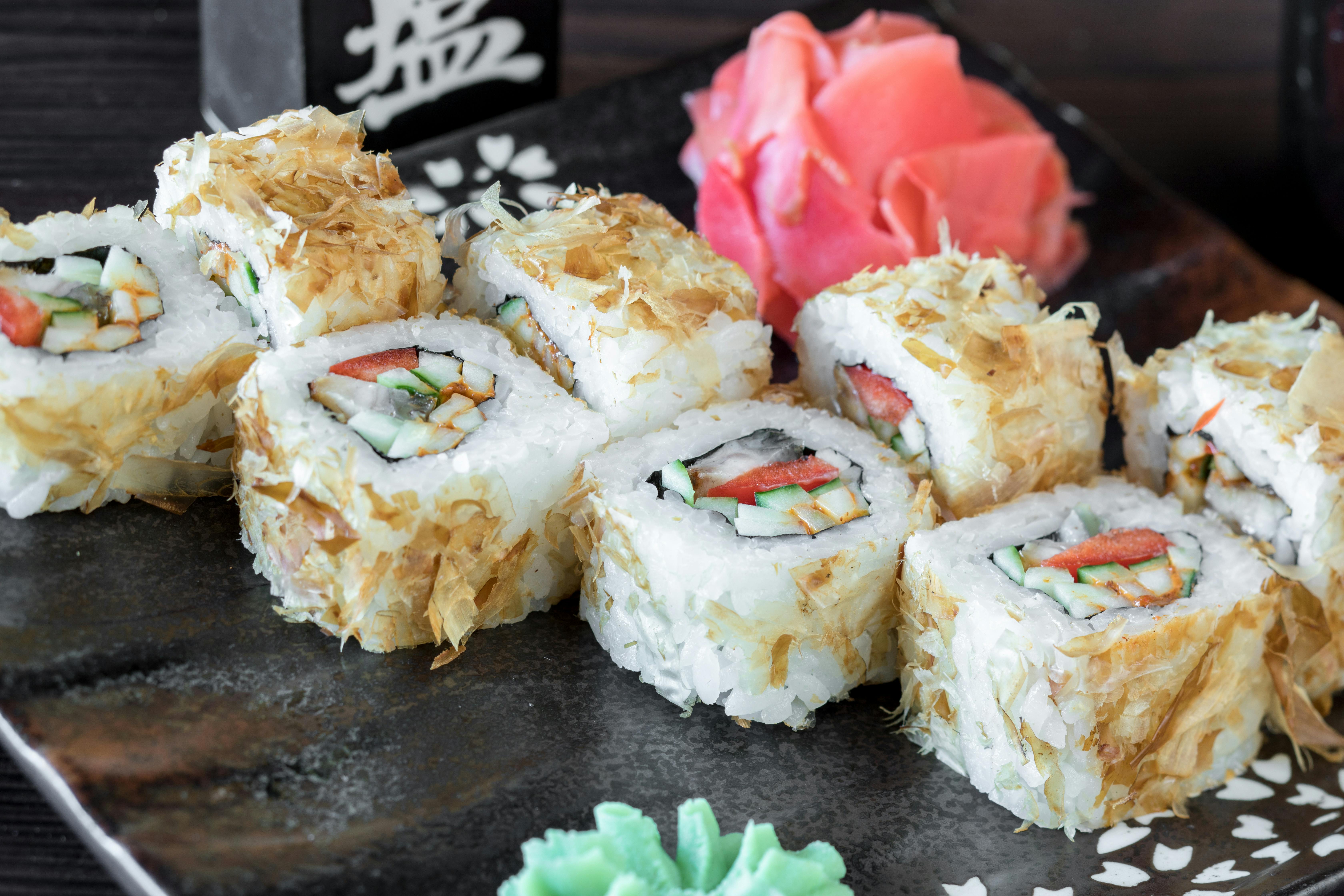
Photo by RASUL YARICHEV
See Michelin’s guide for restaurants in Tokyo here.
Innovation Meets Tradition
In Tokyo, culinary history isn’t just preserved—it’s transformed into art. Tokyo’s chefs strike a balance between honoring age-old practices and pushing boundaries with modern techniques. This harmonious mix of past and present continues to charm diners and Michelin inspectors alike.
Tradition’s Foundation
Japanese culinary tradition centers on respect—for nature, ingredients, and techniques. Recipes are often rooted in ancient practices. For example, sushi expertise is steeped in rituals that have been perfected over centuries. This deep respect ensures every dish celebrates both the chef’s craft and the origin of each ingredient.
The Art of Innovation
At the same time, Tokyo chefs aren’t shy about bringing bold ideas to the table. They deconstruct classical dishes and reinterpret them with precision. Techniques like molecular gastronomy may reimagine sashimi, while French-inspired elements beautifully enhance staple Japanese flavors. For instance, renowned Chef Yoshihisa Akiyama emphasizes how Tokyo’s culinary essence constantly evolves by combining local ingredients with global visions. Learn more about how chefs innovate in Tokyo here.
A Look Into the Future
Facilities like the Gastronomy Innovation Campus are turning Tokyo into not just a dining city, but a hub of food innovation. These forward-thinking sites allow chefs to merge high-tech processes with cultural heritage, ensuring Tokyo’s dishes remain as cutting-edge as they are timeless.
Whether it’s a centuries-old dish elevated with modern flair or an avant-garde creation paying homage to classical roots, Tokyo chefs thrive by intertwining past and future. Their mastery over this fusion is one of the reasons Michelin stars shine so brightly here.
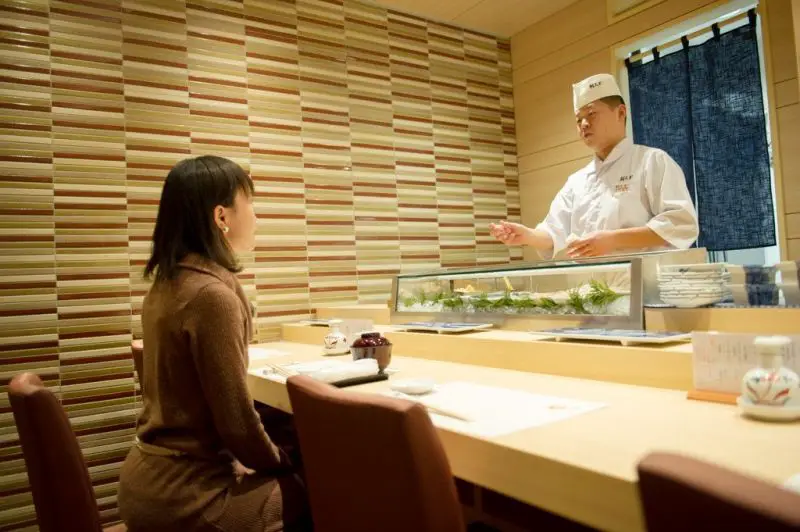
The Role of Exclusivity and Reputation
One of the many reasons why Japan boasts such a high number of Michelin-starred restaurants lies in the concepts of exclusivity and reputation. These two elements work in tandem to create unforgettable culinary experiences that are revered across the globe. Let’s break down how they contribute to Japan’s dominance in the Michelin world.
Private and Intimate Experiences
Imagine stepping into a restaurant where the ambiance feels almost like a private performance. This is the allure of many Michelin-starred establishments in Japan. Their limited seating capacity isn’t just logistics—it’s part of the allure.
Many fine-dining spots in Japan focus on intimacy. Seating is often limited to a select number of patrons, sometimes less than ten. This exclusivity means there’s careful attention to every single detail, from the placement of a napkin to the precise inflection of the chef’s greeting. The result? Diners feel special, as though they’ve been invited into a private world of culinary artistry.
This setup allows chefs to engage directly with their guests. At sushi bars, for instance, diners can watch sashimi being sliced with almost meditative precision. Every interaction is deliberate, fostering a personal connection between the chef, the food, and the diner. It’s not just a meal; it’s an immersive, one-of-a-kind experience.
Exclusivity also creates anticipation. Knowing that reservations might take months—or even years—builds an aura of mystery and desirability. Diners feel they’re part of an elite club, something not easily accessible to everyone.
Learn more about the importance of creating private, unforgettable experiences in Japanese dining here.
Word of Mouth and Prestige
In Japan, reputation isn’t bought—it’s earned over time. Small, family-run establishments can gain global fame simply by word of mouth, starting with loyal local patrons and spreading to an international audience. While advertising helps some restaurants in other countries, in Japan, the prestige often speaks for itself.
When diners leave a Michelin-starred restaurant, they spread the word like ripples in water. The satisfaction, awe, and admiration are shared with friends, family, and even strangers online. It’s almost like a badge of honor to have dined in places that are notoriously difficult to access.
Global travel influencers and food critics also play a role in broadcasting these experiences. A restaurant’s reputation grows exponentially when praised by well-regarded figures or platforms. But in Japan, chefs remain humble. The focus isn’t on glamour; it’s on quietly perfecting dishes and letting the quality speak for itself.
Interestingly, exclusivity and reputation feed off each other. A good reputation makes a restaurant more exclusive, and exclusivity enhances its reputation. This cycle keeps Japanese Michelin-starred eateries consistently in demand.
For some fascinating insights into how Japanese restaurants balance reputation and exclusivity, explore this article.
Through meticulous attention to detail, a culture of humility, and a relentless focus on perfection, Japan has mastered the art of building exclusivity and global recognition for its Michelin-starred restaurants.
Conclusion
Japan’s dominance in Michelin-starred restaurants is no coincidence—it’s the result of a perfect storm of culture, skill, and dedication. Chefs devote their lives to precision and perfection, honoring time-tested traditions while embracing modernity. The availability of unmatched ingredients and the cultural reverence for food as an art form further elevate Japanese cuisine.
Tokyo, in particular, exemplifies this with its unparalleled diversity and innovation. Everywhere, from quiet sushi bars to Michelin-starred kaiseki restaurants, showcases the care and craftsmanship that define Japan’s culinary identity.
Whether you’re a foodie or simply curious, Japan offers an unforgettable dining experience unmatched anywhere else. Why not explore the exquisite artistry of Japanese food yourself? What dish would you seek out first?


